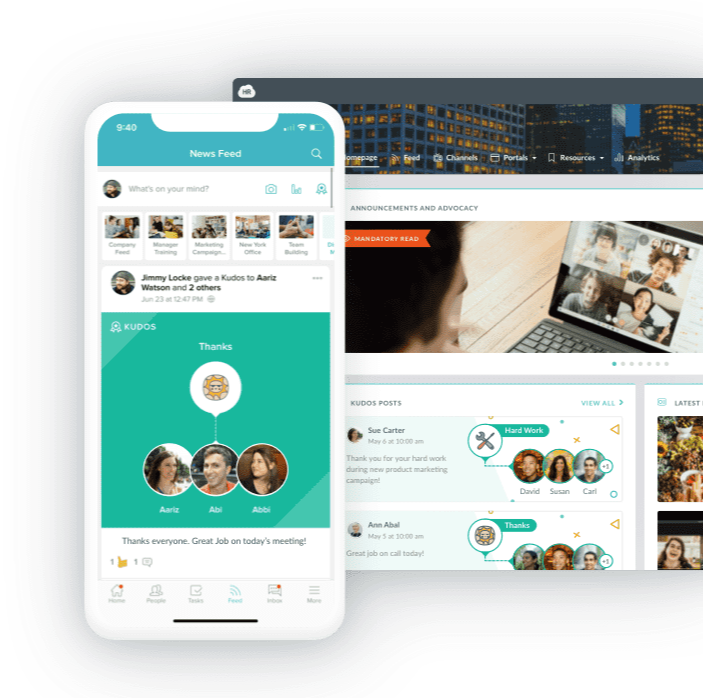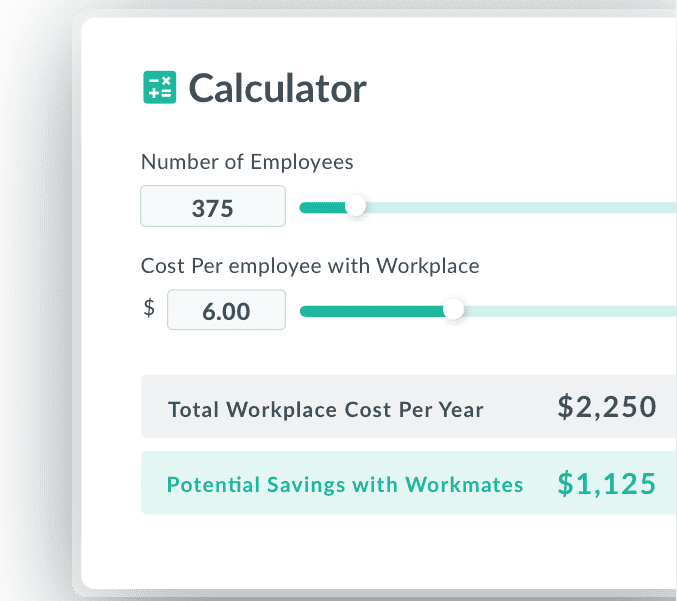Measuring Employee Experience: Key Metrics and Methods

If you are a business owner or a human resources specialist, you definitely understand that people are the most valuable asset of each company. Employees' comfort in the workplace directly impacts the success of the enterprise. According to PeopleKeep, it costs 16% to 213% of a worker’s annual salary to find a replacement for them.
Yet, the more employees there are in the company, the harder it is to assess their experience, solve the issues, and ensure they feel happy doing the work. Luckily, some valuable techniques and KPIs help efficiently measure the employee experience. In this article, we share these solutions so that you can take good care of your staff members.
Employee Experience Defined
Employee experience is the whole journey in an organization. It covers every contact with the company, or touchpoints, that an employee has during their career, such as interviews, onboarding, reviews, team building, exit interviews, etc.
Employee experience aspects are often divided into three categories:
-
Physical workspace: These are about a secure working environment, a good workplace location, the opportunity to work remotely, free meals, and distinct areas in the office for different kinds of work and leisure.
-
Cultural: This one is about providing the chance for future advancement, fair salary, and adequate healthcare and retirement bonuses. It also assesses whether the employer fosters diversity and inclusion and whether employees have a sense of purpose at work.
-
Technological: All employees should have the well-operating tools necessary to complete tasks.
Why Should You Track Employee Experience?
In this super-fast-paced business world, where everyone's scrambling to get the best talent, and companies need to be super agile, employee experience is no longer just a nice bonus—it's a key. When you put effort into understanding and enhancing how people feel and interact at work, the returns are pretty huge for the whole organization. Here're some reasons why monitoring and improving the employee experience is vital:
-
Retention and recruitment: if your team loves their experience at work, they're gonna stick around. Less hiring means less newbies training, which saves time and money. And the best part is that when they're out with friends or on social media, they'll probably talk highly about their job and recommend the company to others, which will also lessen the costs of the recruiting process!
-
Productivity and performance: when one enjoys what they do and where they do it, they're all in. They're motivated, engaged, and just generally doing good at their jobs. According to Gallup’s State of the American Workplace report, Organizations with higher employee engagement see 17% better productivity.
-
Innovation: if people are happy and feel they can speak up, they come up with the coolest ideas. It's all about fostering a trusty environment where everyone feels they can contribute.
-
Customer Satisfaction: it's kind of like a chain reaction. Happy employees are more efficient and eager to communicate and help.
-
Reputation: with social media, one bad review from a disgruntled employee can spread like wildfire. But, on the flip side, some glowing reviews are priceless PR.
-
Data-driven decision-making: when we track how employees feel and where they face challenges, we can pivot and improve based on real data.
Social Intranet Software that Encourages Employee Communication

Ways to Measure Employee Experience
Employee experience measurement techniques are pretty simple and clear, yet it’s vital to know how to use them right. Let’s have a closer look:
Surveys and Questionnaires
Surveys are a pretty time-consuming and tedious process. However, it's still one of the most efficient instruments for analyzing employees' thoughts, concerns, and satisfaction levels.If you're thinking about conducting a survey, keep in mind that digital surveys are far faster to produce and distribute than paper ones, and respondents can answer virtually instantly. Not to mention that having the answers in digital form makes it simpler to consolidate the data and provide summaries.
It would be wise to offer the employees to answer these questions at less busy periods. When the project is done, or at a low season if it's relevant for your sphere. This way, the respondents will have more time and enthusiasm to describe their experience in greater detail. The frequency of such questionnaires is up to you, yet make sure that you don't provide the same questions too often since it may breed annoyance and unwillingness to participate.
Ask both closed-ended and multiple-choice questions. This enables you to gather information about employee engagement without tiring respondents out. Here's the list of questions you can use:
-
On a scale from 1 to 10, how satisfied are you with your current job?
-
Would you recommend this company as a great place to work to a friend?
-
How comfortable is your workspace?
-
Are the tools and technologies provided adequate for you to do your job effectively?
-
Do you feel that your manager respects and values you?
-
Do you feel comfortable giving feedback to your manager?
-
Are you satisfied with the opportunities for professional growth in this company?
-
Would you like more flexibility in your compensation, such as remote work allowances or other perks?
Another essential thing to do is inform your office and frontline staff of the survey's results and what actions you will take further. Your team should be sure that managers take the answers and comments into account.
Performance Reviews and Regular Meetings with HR Specialists
Your survey will be more detailed and useful if you do one-on-one interviews with workers. Check in with staff members regularly to make these meetings less terrifying. These discussions will help you detect some particular problems rather than gather general information and statistics.
Use open-ended questions to encourage conversation and ask about ongoing initiatives' status, development, and difficulties. Try to think of a solution or an approach to find one. Ask employees to share their ideas, vision, and feedback on the processes they are enrolled in.
Exit Interviews
Exit interviews can help you spot areas that need to be improved to retain the finest people and offer priceless insight into the reasons why employees choose to quit your company.
Examples of good questions to ask on an exit interview include:
-
What prompted you to start looking for a new job or consider leaving?
-
Was there anything specific that could have been done to prevent you from leaving?
-
What did you enjoy most about your time at the company?
-
What aspects of the job or company culture could be improved?
-
Did you feel that your contributions were recognized and valued?
-
How would you rate the support and feedback you received from your manager?
-
How was the relationship between your team members and colleagues?
-
Do you have any suggestions for improving the onboarding process for new employees?
Consider developing an exit survey as well so you can ask more in-depth questions. Some people feel more comfortable answering questions in writing rather than in an eye-on-eye conversation.
This enables you to better understand the driving forces behind each employee's choice to quit and take action to stop similar circumstances from occurring in the future.
Find Out How Much You Can Save by Switching to Workmates.
and save upwards of 60%

What KPIs to Take into Account
Before starting to measure employee experience, determine the KPIs that are relevant to you. Here're the descriptions of metrics that may be helpful.
Employee Net Promoter Score (eNPS)
To calculate the eNPS, you need to ask workers to rate how likely it is that they would suggest their present place of employment to others on a scale from 0 to 10.
There will be three types of respondents:
-
Promoters: answered nine or ten;
-
Neutrals: seven or eight;
-
Detractors: 0 to 6.
To get your eNPS, use the formula:
ENPS = (The number of promoters - the number of detractors) ÷ the total number of respondents.
Employee satisfaction may be considered good if the eNPS is 30 or higher.
Employee Productivity
You can get a decent indication of the employee experience in your organization by measuring productivity levels. Setting attainable objectives for your team quarterly or annually and routinely checking in on their progress are excellent ways to gauge productivity. This technique provides a good and stimulating work environment if goals are frequently met or even exceeded.
Is Your Company's Culture
Working Against You?
culture with our short quiz.
Retention Rates
The retention rate is a significant indicator of your employees' satisfaction. It’s only natural that people tend to stay in places where they regularly feel content, inspired, and driven. Here's the formula:
Employee retention = (number of employees at the end of the year ÷ number of employees at the beginning of the year) x 100.A good employee experience level is indicated by a positive retention rate of above 100%.
Employee Absenteeism
Absenteeism is the routine failure to come to work or remain there during working hours. It frequently occurs unexpectedly and without warning. The formula looks like this:
Absenteeism rate = (number of absences ÷ total number of workdays in a year) x 100.
A low absence rate (about zero) often denotes a good working environment. Employees who are pleased about their workplace are less likely to offer lame excuses or take the day off.
Wellness
Job satisfaction and wellness are closely related. Indicators of employee well-being include their mental, emotional, and physical health. Team members who feel overworked, exhausted, burned out, or worried can face problems in their personal lives and the business. Therefore, it's crucial to often check in with employees to ensure their needs are being addressed regarding health and welfare.
Vacation Days Used
Unused vacation days may be a sign that staff members are stressed out and feeling the burden of presenteeism. Finding out who has many vacation days remaining might help you identify deeper issues that staff members have been burying.
What to Do with the Results?
Keep in mind that employee engagement is a result you obtain by constantly providing value to your company. Employee expectations will shift along with emerging trends. Keep an eye on the degree of employee satisfaction and take the necessary measures.
In case of individual issues, try to be as helpful as possible, discuss the solutions, find another employee that can help, be a mediator, inform managers and leads about a problem, etc. Regarding general statistics, you need to analyze all the data and detect the patterns, problems, and weak spots to fix them. The analytics can help you understand the overall mood in the company and gather brilliant ideas and optimization suggestions. Ensure none of the information obtained through the survey or an interview is abandoned.
Author Bio:
Art Malkovich is a co-founding partner and CEO at Onilab. The company provides custom Magento development services, develops progressive web apps on a turnkey basis, offers store migration and UX/UI design services. Art has a profound expertise in web development, project management, and data analysis. He strives to keep the team one step ahead with a current focus on headless commerce.
Keep Reading
Balancing Technology and the Human Touch in Employee Engagement
Companies are taking employee engagement very seriously because it is one of the ways of
Building Strong Teams: The Power of Team Bonding Exercises
Never overestimate the power of collaboration as a core element of effective team
